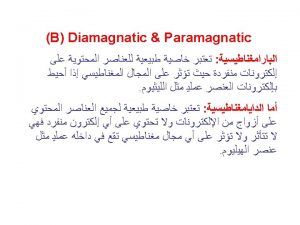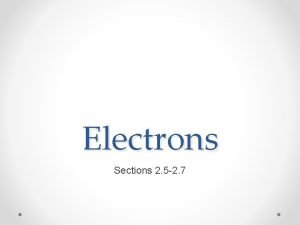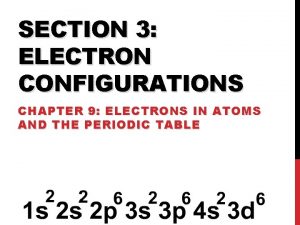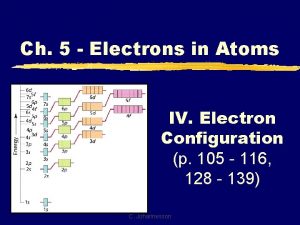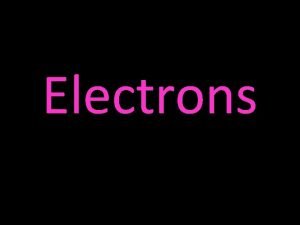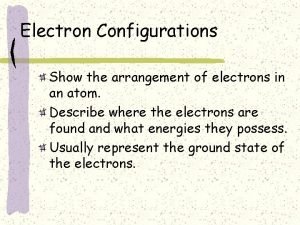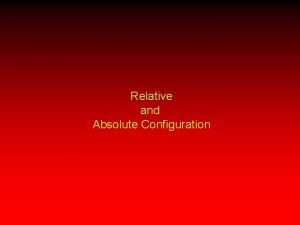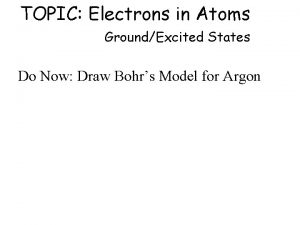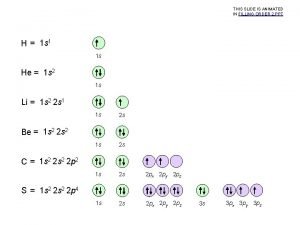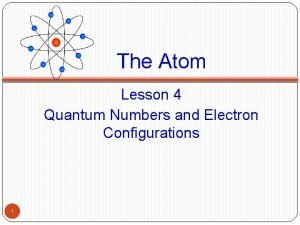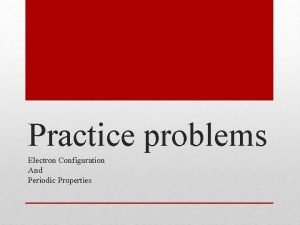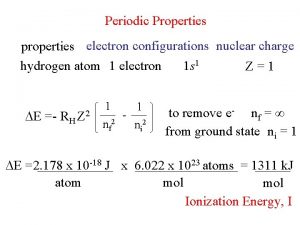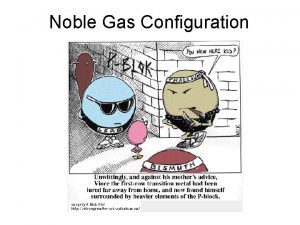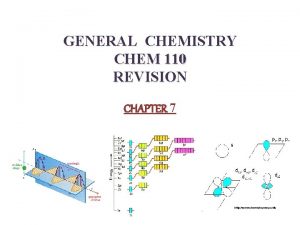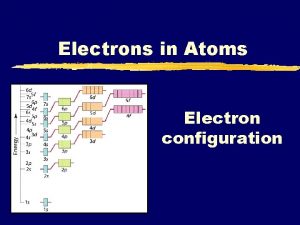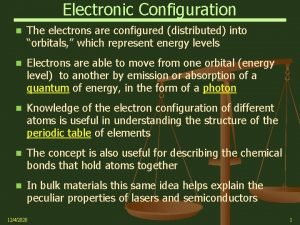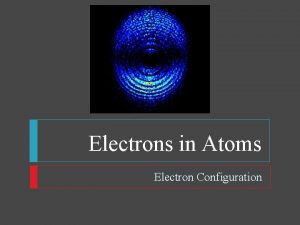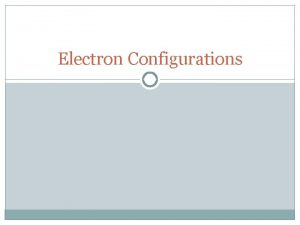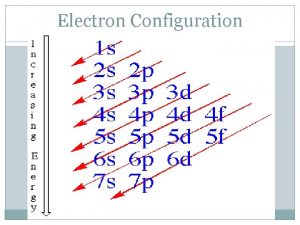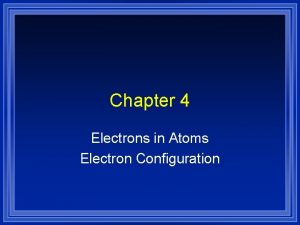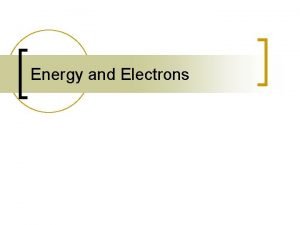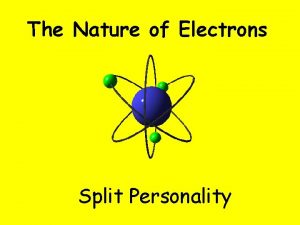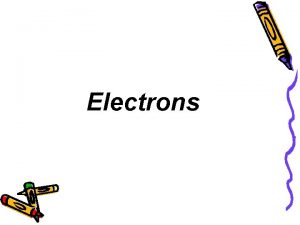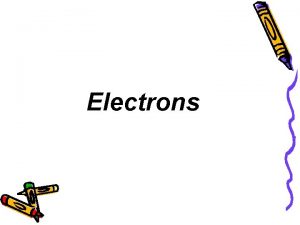Electron Configuration Chemistry Electron Configuration The way electrons
























- Slides: 24

Electron Configuration Chemistry

Electron Configuration The way electrons are arranged around the nucleus. n

Quantum Mechanical Model n n 1920’s Werner Heisenberg (Uncertainty Principle) Louis de Broglie (electron has wave properties) Erwin Schrodinger (mathematical equations using probability, quantum numbers)

Energy Levels n Indicates main energy levels n = 1, 2, 3, 4… Farther from nucleus = higher number n Each main energy level has sub-levels n s p d f

n The Energy level number, n, determines the number of sublevels within the principle energy level.

Orbital n n The space where there is a high probability that it is occupied by a pair of electrons. Orbitals are solutions of Schrodinger’s equations.

Orbitals in Sublevels Sublevel s p d f g shapes # Orbitals 1 3 5 7 9 # electrons 2 6 10 14 18

Three rules are used to build the electron configuration: Aufbau principle n Pauli Exclusion Principle n Hund’s Rule n

Aufbau Principle n Electrons occupy orbitals of lower energy first.

Aufbau Diagram

The diagonal rule

Hund’s Rule In a set of orbitals, the electrons will fill the orbitals in a way that would give the maximum number of parallel spins (maximum number of unpaired electrons). Analogy: Students could fill each seat of a school bus, one person at a time, before doubling up.

-Pauli Exclusion Principle (Wolfgang Pauli, Austria, 1900 -1958) n An orbital can hold only two electrons and they must have opposite spin. Good NOT

Aufbau Diagram for Hydrogen

Aufbau Diagram for Helium

Aufbau Diagram for Lithium

Aufbau Diagram for Beryllium

Aufbau Diagram for Boron

Aufbau Diagram for Carbon

Aufbau Diagram for Nitrogen

Aufbau Diagram for Fluorine

Standard Notation of Fluorine 2 1 s Number of electrons in the sub level 2, 2, 5 2 2 s 5 2 p y g r ne E n i Ma el v s r e e L b m Nu , 2 2 , 1 Sublevels

Shorthand Notation n n Use the last noble gas that is located in the periodic table right before the element. Write the symbol of the noble gas in brackets. Write the remaining configuration after the brackets. Ex: Fluorine: [He] 2 s 2 2 p 5

Blocks in the Periodic Table
 Paramagnetic unpaired electrons
Paramagnetic unpaired electrons Valence electrons in rubidium
Valence electrons in rubidium S orbital
S orbital Electron configuration for 5 electrons
Electron configuration for 5 electrons Electron configuration vs noble gas configuration
Electron configuration vs noble gas configuration Electronic configuration of
Electronic configuration of Electronic configuration is arrangement of electrons in
Electronic configuration is arrangement of electrons in Absolute configuration
Absolute configuration Chiral and achiral molecules examples
Chiral and achiral molecules examples Absolute vs relative configuration
Absolute vs relative configuration Excited state electron configuration
Excited state electron configuration Orbital diagram for uranium
Orbital diagram for uranium Quantum numbers and electron configuration
Quantum numbers and electron configuration Oganesson electron configuration
Oganesson electron configuration 6 the periodic table practice problems
6 the periodic table practice problems Carbon electron configuration
Carbon electron configuration Hydrogen electron configuration
Hydrogen electron configuration Electronic configuration of oxygen
Electronic configuration of oxygen Noble gas block
Noble gas block Why does group 7 reactivity decrease
Why does group 7 reactivity decrease S+ electron configuration
S+ electron configuration How many electrons can f orbital hold
How many electrons can f orbital hold N and l electron configuration
N and l electron configuration Aluminium oxide ions
Aluminium oxide ions Electronic configuration of all
Electronic configuration of all
